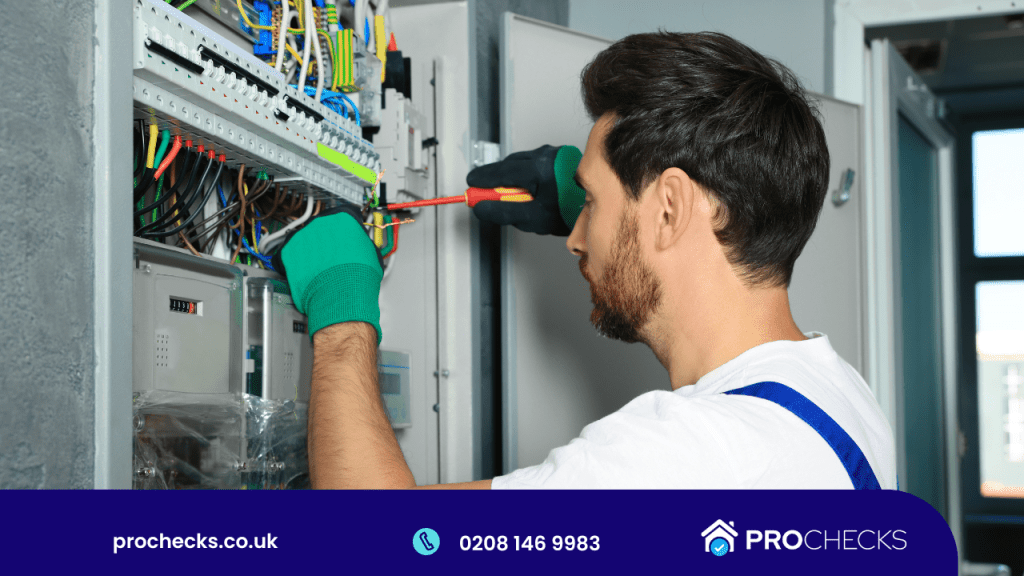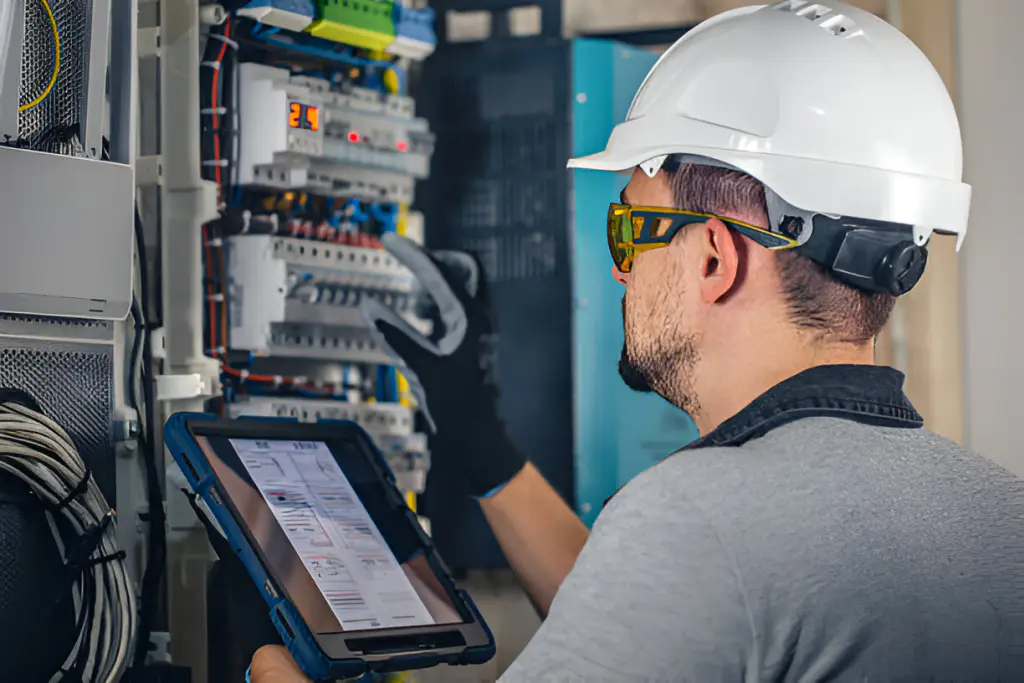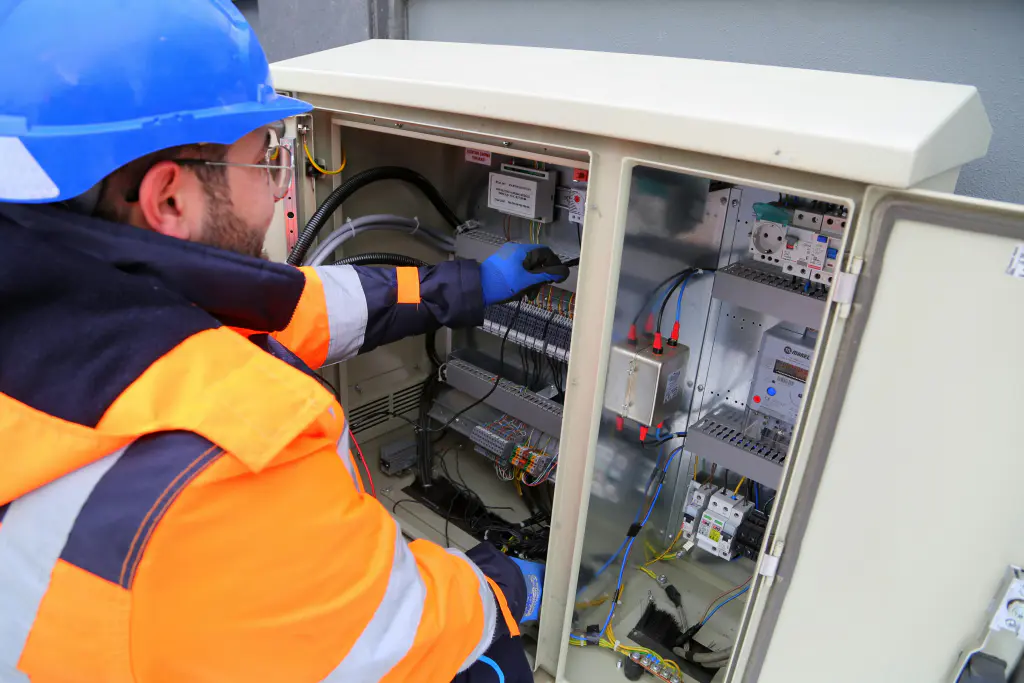The Electrical Installation Condition Report (EICR) serves a fundamental role in ensuring electrical safety and regulatory compliance. This detailed assessment systematically reviews and documents the condition of electrical installations, identifying any potential hazards or deviations from established safety standards. By requiring periodic inspections, the EICR helps monitor the integrity and functionality of electrical systems, thereby mitigating risks of electrical fires and shocks. It’s a crucial tool for property owners, enforcing compliance with the Electricity at Work Regulations 1989 and BS 7671 standards. For those concerned with maintaining safe and compliant electrical installations, further exploration of this topic offers valuable insights. Let’s understand The Purpose of the EICR: Ensuring Electrical Safety and Compliance.
What Does an EICR Cover?
An Electrical Installation Condition Report (EICR) meticulously assesses the safety of existing electrical installations within a property, identifying any potential risks and non-compliance with current electrical standards. This comprehensive examination entails a systematic review of all electrical circuits and equipment, ensuring they conform to the stringent criteria set forth by industry regulations.

The report documents each finding in precise detail, facilitating a clear understanding of any corrective measures that need to be implemented. The EICR documentation serves as an essential record that aids property owners in maintaining electrical systems within the bounds of safety and regulatory compliance.
Moreover, the frequency of these inspections is dictated by several factors including the type of installation, its use and age, and environmental influences. For domestic properties, it is generally recommended every ten years or with every change of occupancy. For commercial and industrial setups, the assessments are required more frequently, typically every five years.
These evaluations are crucial in preempting electrical failures, ensuring the longevity of the property’s electrical infrastructure, and safeguarding occupants from potential hazards. Thus, adhering to the prescribed EICR frequency is imperative for ongoing compliance and safety assurance.
Why is the EICR Important for Safety?
Understanding the significance of the Electrical Installation Condition Report (EICR) for safety provides a clearer perspective on the necessity of these evaluations. The EICR is a formal document generated following an assessment of the electrical installations within a property, aiming to identify any deficiencies against the national safety standard for electrical installations. This comprehensive assessment is critical as it helps prevent potential electrical hazards by ensuring all electrical systems and circuits are not only up to code but also in safe working order.
The implementation of an EICR is deeply intertwined with the mitigation of risks associated with defective electrical systems, which can lead to severe consequences such as electric shock, fires, and other hazardous incidents. The benefits of conducting these assessments are manifold, emphasizing preventive measures and enhancing safety protocols.
| Feature | Benefit |
|---|---|
| Fault Identification | Reduces risk of electrical fires |
| Compliance Check | Ensures adherence to safety norms |
| Preventive Action | Averts potential electrical hazards |
Through this methodical and regulatory-focused approach, EICR benefits become evident, playing a pivotal role in safeguarding environments from adverse electrical incidents and enhancing overall electrical safety compliance.
UK Laws, You Need to Know About EICR
Navigating the complexities of UK laws regarding the Electrical Installation Condition Report (EICR) is essential for property owners and managers. The EICR regulations are embedded within various statutory requirements that demand strict adherence to ensure safety and compliance.
One of the pivotal aspects of these regulations concerns landlord responsibilities, an area significantly underscored by the Electricity at Work Regulations 1989 and the Housing Act 2004.
Landlords are legally mandated to ensure that all electrical installations in their properties are thoroughly inspected and tested by a qualified electrician at regular intervals. The EICR must be performed according to the standards set out in the BS 7671, also known as the UK national standard for electrical installations. This document outlines the requisite practices for the installation, maintenance, and verification of electrical installations, thereby forming a cornerstone of compliance.
Failure to comply with these requirements not only risks the safety of tenants but also exposes landlords to potential legal consequences. Penalties can range from hefty fines to more severe sanctions, depending on the gravity of the oversight.
Thus, it is imperative that landlords not only understand but rigorously implement these regulations to uphold safety and avoid legal repercussions.
Who Needs an EICR and How Often Should It Be Done?
Most property owners, including landlords and business operators, are required to obtain an Electrical Installation Condition Report (EICR) to ensure ongoing safety and compliance with electrical standards. Specifically, landlord responsibilities under various housing acts and regulations mandate regular electrical inspections and the acquisition of an EICR to safeguard tenants.

Homeowner obligations, while slightly different, also necessitate maintaining electrical installations in safe working order, especially when preparing a property for sale or rent.
The frequency of these inspections and subsequent reporting depends on several factors. For rental properties, landlords must ensure that an EICR is carried out at least every five years or with each change of tenancy.
In commercial environments, the period between inspections can be as short as one year, particularly in places with high public access or increased electrical system demands. Homeowners, though not bound by stringent regulatory timelines, are advised to undertake an EICR at least every ten years, or when modifications to the electrical system occur.
Adherence to these intervals not only ensures compliance with legal standards but also enhances the safety and reliability of the property’s electrical infrastructure, mitigating risks associated with outdated or deteriorated installations.
How Does the EICR Help Keep Your Property Safe?
The Electrical Installation Condition Report (EICR) plays a crucial role in maintaining the safety of your property by rigorously assessing the integrity and functionality of the electrical systems.
This assessment is pivotal in identifying and mitigating potential electrical hazards, thus ensuring the safety of the occupants and compliance with the latest safety standards.
By systematically evaluating all aspects of a property’s electrical infrastructure, the EICR serves as a preventive measure against the risk of electrical fires, shocks, and other hazardous conditions.
- Identification of Potential Hazards: The EICR identifies any deterioration, defects, or deviations from the wiring regulations that could potentially lead to serious safety risks.
- Ensuring Compliance: It certifies that electrical installations meet the current regulations and safety standards, promoting a high level of safety and operational reliability.
- Recommendations for Improvements: The report provides detailed recommendations for remedial actions necessary to address any identified safety issues.
- Periodic Monitoring: Regular updates through subsequent EICRs ensure ongoing compliance and safety, adapting to updated standards and technological advancements.
In this way, the EICR is an essential tool in the proactive management of electrical safety risks, safeguarding both property and people.
What is Checked During an EICR Inspection?
During an EICR inspection, a qualified electrician meticulously examines various elements of the property’s electrical system to ensure everything operates within safe parameters. This comprehensive evaluation includes checking the integrity and functionality of electrical components such as wiring, sockets, switches, light fixtures, and circuit breakers. The inspection aims to identify any deterioration or defects that could pose potential safety hazards.

The electrician also assesses the adequacy of earthing and bonding arrangements, which are crucial for preventing electrical shock and ensuring that any fault currents are safely conducted to the ground. The condition of the consumer unit (fuse box) is closely scrutinized for compliance with current safety standards, particularly regarding its capacity to handle the property’s electrical load safely.
Furthermore, the inspection includes testing of residual current devices (RCDs) for their responsiveness in cutting off electricity swiftly enough to avoid injury. The inspector evaluates the overall installation for any signs of overloading or potential electric shock risks and checks that all installations comply with the latest safety regulations and standards.
This thorough process ensures the electrical system’s reliability and safety, safeguarding occupants and the property itself from electrical risks.
Common Problems Found in EICR Reports
Electrical Installation Condition Reports (EICRs) frequently reveal a range of common issues that could compromise the safety and functionality of a building’s electrical system.
These findings are crucial for ensuring compliance with current electrical safety standards and preventing potential hazards.
Detailed below are several recurrent problems often highlighted in EICR assessments:
- Wiring Issues: Deterioration or improper installation of wiring can lead to dangerous situations. Often, insulation breaks down over time, and connections may become loose, creating a significant risk of fire and electric shock.
- Electrical Overloads: Many reports pinpoint overloaded circuits, which can occur from insufficient capacity for the demand. This not only poses a fire hazard but also significantly degrades the electrical system’s efficiency and longevity.
- Poorly Executed Modifications: Unauthorized or DIY modifications typically result in non-compliance with safety regulations. These modifications often compromise the system’s integrity and can invalidate insurance policies.
- Outdated or Inadequate Consumer Units: Older consumer units that do not meet the latest safety standards often lack necessary protection features like residual current devices (RCDs), essential for preventing electrical shocks and fires.
Identifying and addressing these issues is pivotal in maintaining an electrically safe environment and ensuring regulatory compliance.
What to Do If Your EICR Fails?
Upon receiving a failed Electrical Installation Condition Report (EICR), immediate action is required to address the identified deficiencies and ensure compliance with electrical safety regulations. The report will detail specific failures and outline necessary remedial actions. Property owners must prioritize these actions, as failing to rectify the issues can lead to severe safety hazards and legal repercussions.
Firstly, review the EICR thoroughly to understand each fault and its implications. It is advisable to consult with a qualified electrician who can provide a clear strategy and timeline for the remedial work required. This professional will categorize the urgency of each issue, from immediate danger to recommended improvements.
If there is uncertainty or disagreement with the EICR findings, the property owner can initiate an appeal process. This involves hiring another certified inspector to conduct a fresh EICR. If discrepancies are found between the two reports, a specialist adjudication may be sought to resolve the matter.
Conclusion
In conclusion, the Electrical Installation Condition Report (EICR) is a critical tool for ensuring the safety and compliance of electrical installations within properties. Through systematic inspections, potential hazards are identified, and necessary remedial actions are mandated, thus safeguarding occupants and property. Regular adherence to EICR requirements not only meets legal obligations but also significantly mitigates the risk of electrical failures, promoting a safer living and working environment.









